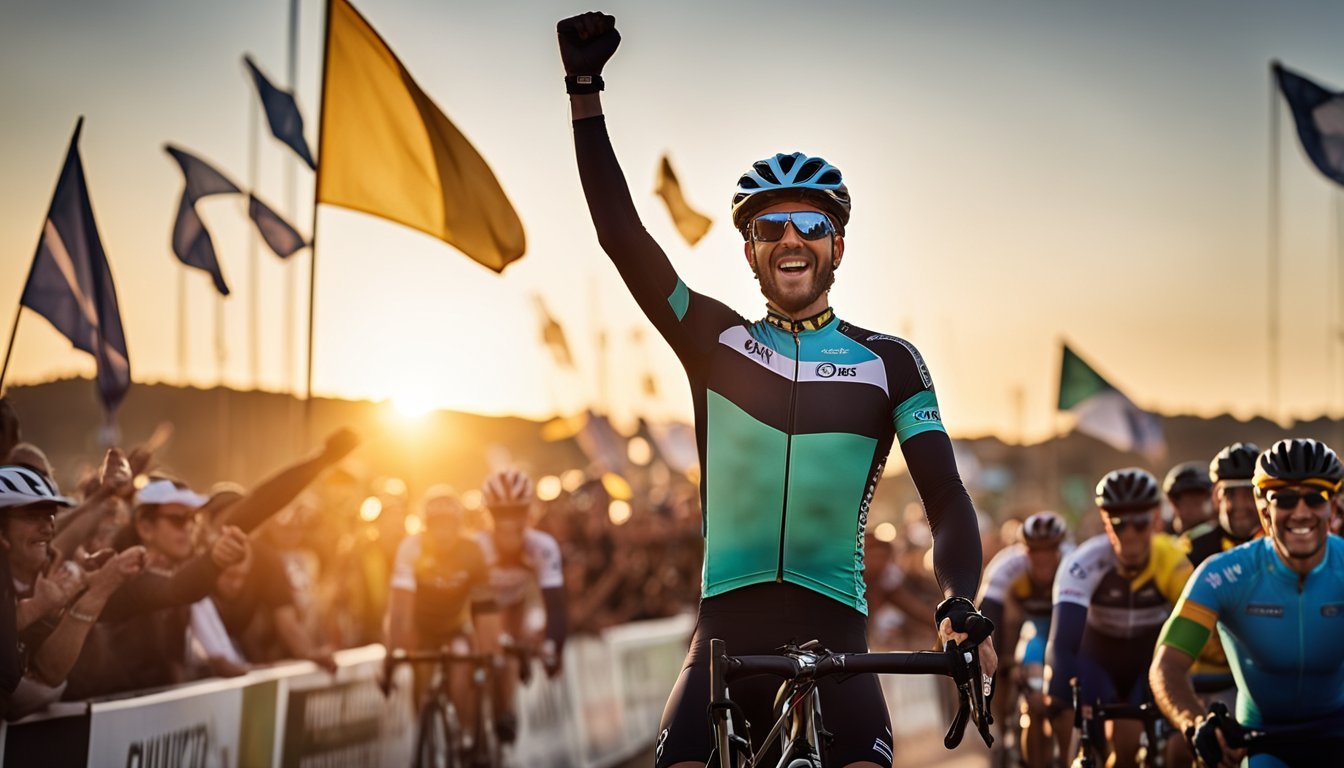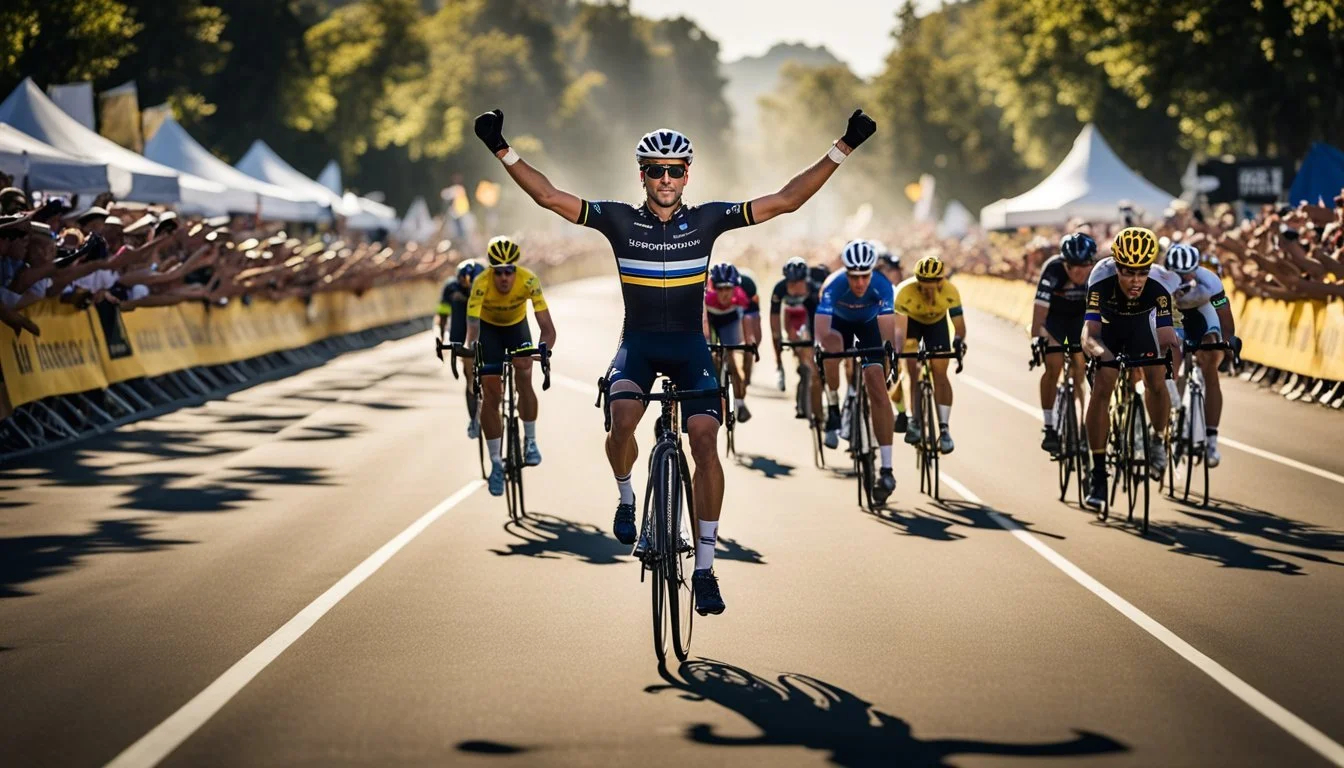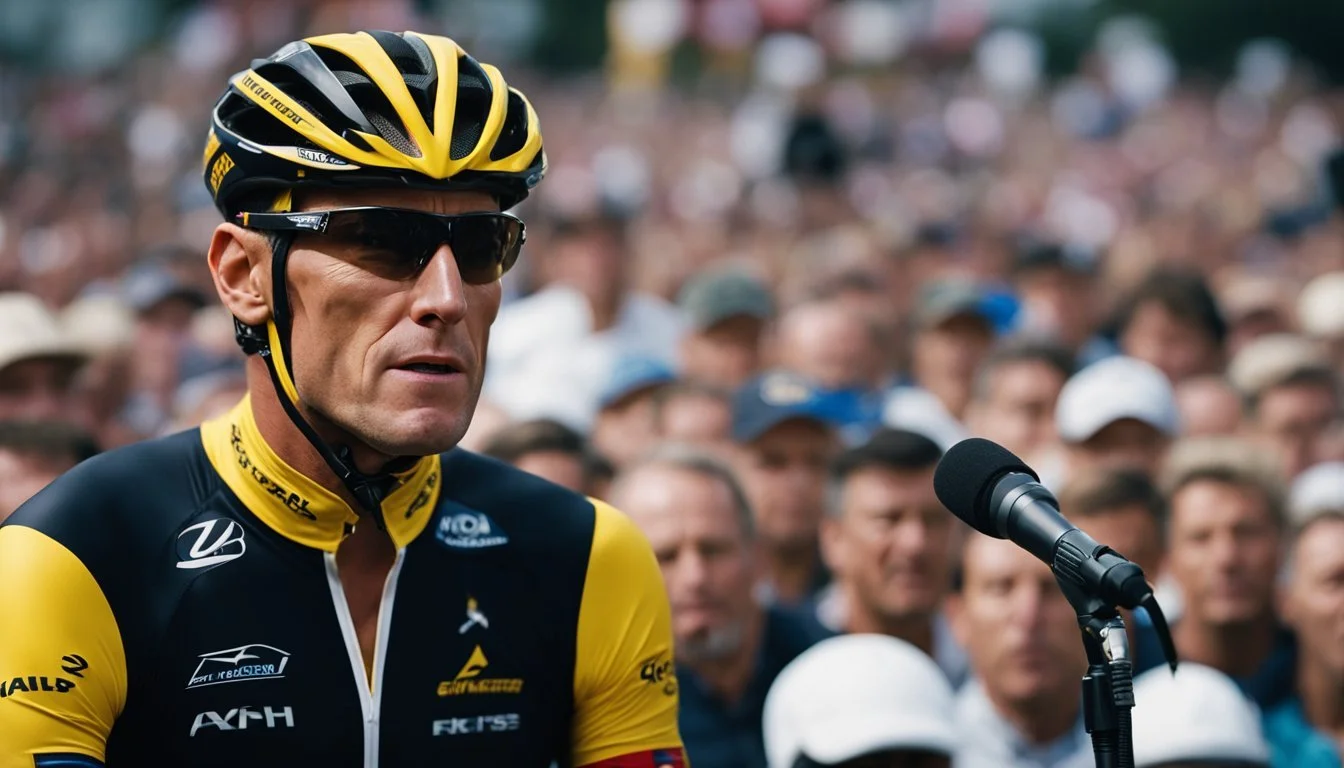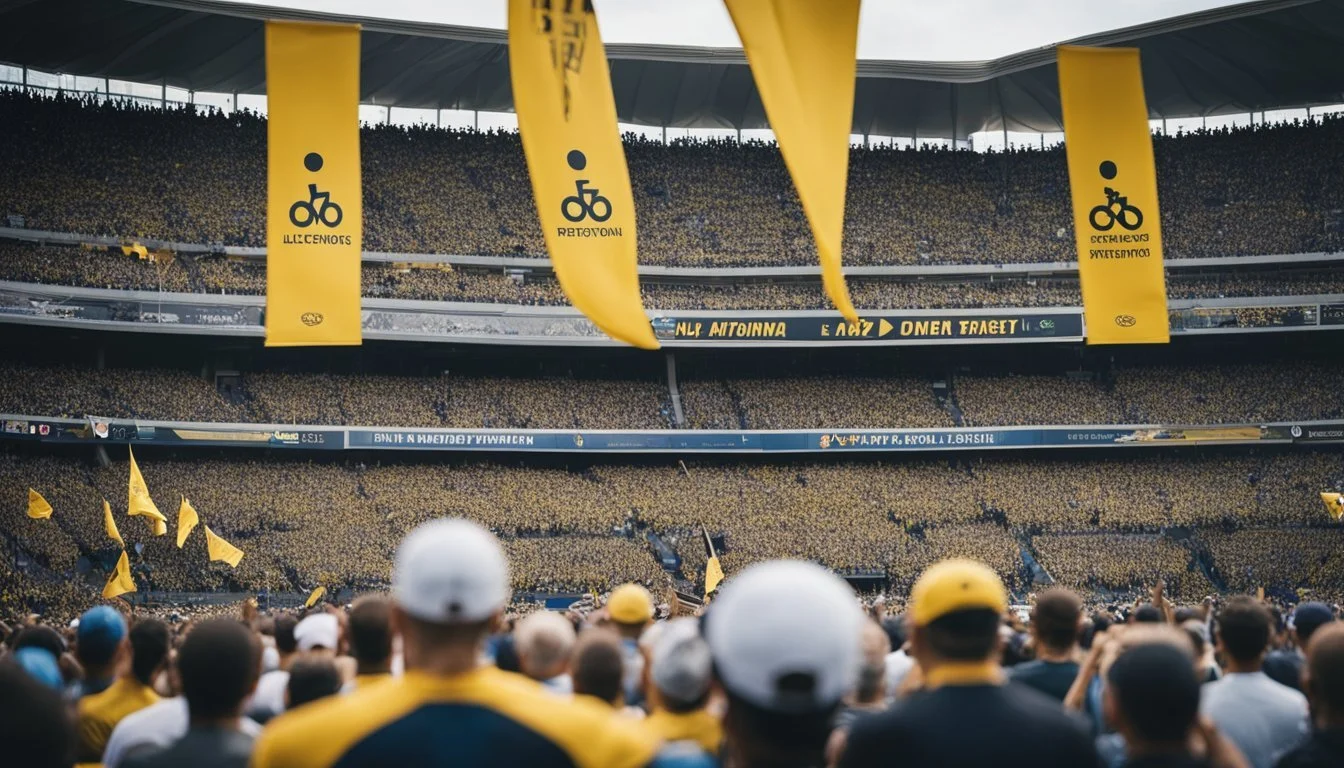Lance Armstrong's Legacy Reexamined
What Austin's Sporting Heroes Can Learn
Lance Armstrong's journey through the world of professional cycling offers a compelling narrative marked by both triumph and controversy. Born in 1971 in Plano, Texas, Armstrong's name became synonymous with cycling excellence, particularly through his seven Tour de France victories. Yet, it is the complex legacy he leaves behind that continues to provoke discussion and reflection.
Armstrong's story begins in the heart of Texas and extends globally, but his reach in Austin remains particularly significant. Known for his association with the city, Armstrong's resilience and ambition inspired many local athletes. His battle with cancer and subsequent return to the pinnacle of cycling showcased a blend of determination and vulnerability that many sporting heroes seek to emulate.
The scandal that revealed his use of performance-enhancing drugs changed the narrative, transforming a symbol of perseverance into a cautionary tale. This duality in Armstrong's legacy offers valuable lessons for Austin's sporting community. It underscores the importance of integrity and the far-reaching consequences of choices made in the pursuit of success.
The Rise of Lance Armstrong
Lance Armstrong's ascent to the pinnacle of professional cycling is marked by remarkable early achievements, consecutive Tour de France victories, and a courageous battle against cancer. His journey from a promising young cyclist to a global icon is inspirational and complex.
Early Achievements in Cycling
Lance Armstrong was born in Plano, Texas, and began his cycling career at a young age. He demonstrated his potential early, winning the U.S. National Amateur Championship in 1991.
In 1992, he turned professional, joining the Motorola Cycling Team and quickly made a name for himself by winning the World Road Race Championship in 1993. These victories positioned Armstrong as a rising star in the world of cycling.
Conquering the Tour de France
Armstrong's dominance in the Tour de France began in 1999. After battling cancer, he returned to the sport with renewed vigor and determination. He won seven consecutive Tour de France titles from 1999 to 2005, a feat unmatched in the history of the sport.
These victories made him a symbol of perseverance and excellence. He became a hero not just in the United States but globally, inspiring millions with his story of overcoming adversity.
The Battle Against Cancer
In 1996, Armstrong was diagnosed with advanced testicular cancer that had spread to his lungs and brain. The prognosis was grim, but he underwent aggressive treatment and emerged as a symbol of hope and resilience.
His battle against cancer, coupled with his unprecedented success in cycling, turned Armstrong into a global icon. He leveraged his fame to establish the Lance Armstrong Foundation (now Livestrong), raising millions for cancer research and support.
The story of his triumph over cancer added a layer of depth to his legacy, resonating with cancer survivors and their families.
Lance Armstrong Foundation
The Lance Armstrong Foundation made significant strides in providing support for cancer patients and raising awareness about the disease. Its journey from a small local charity to a globally recognized organization is marked by a commitment to survivorship and an innovative approach to fundraising.
Establishing Hope and Support
When Lance Armstrong founded the Lance Armstrong Foundation in 1997, he aimed to inspire and empower cancer patients. Following his own battle with testicular cancer and chemotherapy, the mission of the foundation emphasized survivorship, providing resources and support systems for those grappling with the disease. The foundation offered counseling, educational materials, and community programs to bolster the spirits of those affected by cancer. This focus on practical and emotional support helped many navigate the challenging journey from diagnosis to recovery.
Fundraising and Awareness
The foundation's innovative approach to fundraising gained widespread attention with the introduction of the iconic yellow Livestrong wristbands. These wristbands, symbolizing hope and solidarity, became a cultural phenomenon, raising millions of dollars for cancer research and support programs. The foundation’s campaigns, bolstered by Armstrong’s fame, mobilized a global community to donate and participate in events. Livestrong’s partnerships with major corporations and sporting events further amplified its reach, ensuring that the fight against cancer was a visible and urgent cause.
Growth and Impact
From its modest beginnings, the Lance Armstrong Foundation transformed into Livestrong, a leading cancer charity known worldwide. By 2012, the foundation had raised over $500 million, significantly contributing to cancer survivorship programs. Its impact extended beyond financial support; it influenced public policy on cancer treatment and survivorship. Livestrong’s resources, including its comprehensive website and patient navigation services, became vital tools for millions. Despite controversies surrounding Armstrong, the foundation’s legacy of hope and resilience remains a cornerstone for many in the cancer community.
Controversy and Doping Allegations
Lance Armstrong's sporting career was marred by a series of serious doping allegations that severely impacted his legacy. This section covers the key elements of the scandal, examining its intricate details and the far-reaching consequences.
The Doping Scandal
Lance Armstrong’s story took a massive turn when he was accused of using performance-enhancing drugs (PEDs). For over a decade, he fervently denied these allegations. The substances in question included EPO (Erythropoietin), which boosts red blood cell production, and other PEDs. The scandal reached its climax in 2012 when the United States Anti-Doping Agency (USADA) conducted a thorough investigation. USADA's findings led to Armstrong being stripped of his seven Tour de France titles and a 2000 Olympic medal. The public and media attention drastically shifted, transforming Armstrong’s image from a celebrated hero to a disgraced athlete.
Fallout with Sponsors and Partners
Following the doping revelations, Armstrong faced severe financial and professional repercussions. Nike, one of his long-time sponsors, swiftly severed its ties with him. Other major sponsors, including Trek and Anheuser-Busch, also ended their partnerships, resulting in substantial financial losses. This mass exodus of sponsors highlighted the deep mistrust and ethical concerns surrounding Armstrong after the doping scandal. The sponsorship fallout not only affected Armstrong personally but also had significant impacts on the charities and enterprises associated with him, including his Livestrong Foundation.
Public Perception and Legal Battles
Public opinion dramatically shifted as Armstrong went from a symbol of resilience to a case study in dishonesty. His eventual apology in a 2013 interview with Oprah Winfrey did little to salvage his reputation. Legal battles ensued, including settlements with former sponsors and whistleblowers. The most notable legal case involved a former teammate, Floyd Landis, leading to a $5 million settlement with the U.S. government. The scandal became a profound lesson in the sports world about accountability and the severe consequences of using PEDs.
Lance Armstrong's Apology and Admission
Lance Armstrong's apology and admission of his doping activities were pivotal moments in sports history. His public confession brought widespread attention and mixed reactions.
The Oprah Winfrey Interview
Lance Armstrong sat down with Oprah Winfrey in January 2013. During the interview, he confessed to using performance-enhancing drugs, including EPO and human growth hormone.
This marked a dramatic fall from grace for the athlete. His admission came after years of denial and legal battles.
Armstrong stated that his actions were part of a culture of doping in cycling. Oprah's probing questions led to Armstrong acknowledging the damage he caused to the sport, his reputation, and his accusers.
This interview was a significant media event, viewed by millions and sparking ongoing debates about ethics in sports.
Livestrong's Evolution Post-Armstrong
Following Lance Armstrong's departure, Livestrong underwent significant changes to reshape its identity and direction, ensuring its survival and continued impact on the community and global health initiatives.
Rebranding and Future Directions
Livestrong stepped up its rebranding efforts to distance itself from the Armstrong scandal while continuing its mission to support cancer survivors. The foundation introduced new logos, slogans, and initiatives focused more broadly on health and wellness.
These efforts were crucial in maintaining public trust and securing continued donations. The organization expanded its outreach and collaborations with hospitals, research institutions, and wellness programs.
The emphasis shifted from Armstrong's celebrity to the collective strength of its supporters, patients, and healthcare professionals, thereby diversifying its impact and presence globally.
Leadership and Organizational Changes
Significant leadership changes shaped Livestrong's path post-Armstrong. Doug Ulman, the CEO during much of Armstrong's tenure, left the organization. He was succeeded by new leadership that focused on transparency and accountability.
The Board of Directors saw new appointments aimed at bringing fresh perspectives and expertise to steer the foundation through its transitional phase. These changes included a stronger emphasis on governance and strategic oversight.
Such leadership transitions were instrumental in reassuring stakeholders about the foundation's commitment to its core mission and ethical standards.
Sustaining the Mission Without Armstrong
Livestrong faced the challenge of sustaining its mission without the star power of Lance Armstrong. They bolstered efforts to strengthen community ties and grassroots fundraising.
Partnering with various cancer treatment and support organizations, the foundation tapped into a network of resources beyond individual celebrities. It hosted events and campaigns aimed at directly engaging cancer survivors and their families.
Livestrong's ratings on platforms like Charity Navigator demonstrated its effectiveness and efficiency, crucial for maintaining donor confidence and support. This decentralized approach allowed the foundation to continue making a significant impact.
Through strategic planning and community involvement, Livestrong successfully navigated its post-Armstrong evolution, ensuring its continued relevance and efficacy in the fight against cancer.
The Legacy of Lance Armstrong
Lance Armstrong's legacy is complex, filled with unprecedented achievements in cycling and significant contributions to cancer research. He serves as a cautionary tale for aspiring athletes but also leaves a lasting impact on the community.
Impact on Cancer Research and Patients
Armstrong's diagnosis of advanced-stage testicular cancer at age 25 transformed him into a vocal advocate for cancer research. He founded the Lance Armstrong Foundation (now Livestrong Foundation), which has raised millions of dollars for cancer patients and research.
Livestrong's yellow wristbands became symbols of hope and resilience. The foundation has supported over 100,000 cancer survivors through programs and services, from financial assistance to mental health care. Despite controversies, his work has undeniably helped countless individuals navigate their cancer journeys.
Lessons for Austin's Athletes and Beyond
Armstrong’s story serves as a crucial lesson for athletes, particularly in Austin. His rise to fame through sheer determination and skill exhibits the heights an athlete can reach. However, his subsequent fall due to doping is a stark reminder of the costs of unethical choices.
Austin athletes can learn the importance of integrity and resilience from Armstrong's experiences.
Local sports programs have increasingly emphasized ethical training and drug education. Armstrong's journey also encourages athletes to support their communities, as seen in his substantial fundraising efforts for health initiatives. These lessons extend beyond Austin, influencing sports ethics globally.
The Future of Cycling in Austin
Austin's cycling scene owes much to Armstrong’s influence, inspiring many to take up the sport. Cycling events and local clubs have flourished, thanks in part to the visibility he brought to the sport.
Efforts are underway to not only maintain but expand Austin's cycling infrastructure. Plans include creating more bike lanes and hosting larger community cycling events. Armstrong's legacy, despite its controversies, has fostered a passionate cycling community in Austin, setting the stage for future champions emerging from the local scene.
Aspiring cyclists in Austin are now more motivated than ever, while advocacy for clean sport maintains its momentum, ensuring a brighter and more ethical future for the sport.
Community and Philanthropy in Austin
Austin has a rich history of community engagement and philanthropy, often intertwined with its sporting culture. This section explores key areas where local efforts in charitable work intersect with the city's passion for sports.
Engaging with Local Nonprofits
Numerous nonprofits in Austin play pivotal roles in addressing community needs. Livestrong Cancer Institutes, originating from Lance Armstrong's foundation, exemplify how sports and charity can converge to make substantial impacts. They work on innovative cancer treatment and survivorship programs.
Ride for the Roses, an annual cycling event initiated by Livestrong, mobilizes locals and cycling enthusiasts to fundraise. Participation extends beyond athletes, with families and local businesses contributing.
Efforts by the Nonprofit Foundation in Austin often receive support from various community sectors, ensuring sustainability and fostering lasting partnerships. In Downtown Austin, several local businesses also actively support these initiatives through sponsorships and donations, highlighting the city's collaborative spirit.
Sports and Community Development
Sports are integral to community development in Austin. The city hosts numerous events like cycling events that boost both local morale and economy. Events such as Ride for the Roses amplify community engagement by encouraging widespread participation.
Initiatives by charity organizations often leverage sports to foster community spirit and physical wellness. For example, fundraising events tied to athletic achievements provide inclusive platforms for community involvement.
Downtown Austin has become a hub for sporting and charitable activities. These events not only provide financial aid to various causes but also promote social cohesion by bringing people together. Through these efforts, sports contribute significantly to the social fabric and communal prosperity of Austin.
Austin's Sporting Environment
Austin has developed an impressive infrastructure that supports a variety of sporting activities, fostering both local talent and community engagement. The city offers numerous outlets for those eager to participate in sports or simply stay active.
Infrastructure and Opportunities
Austin's commitment to sports is evident in its well-maintained facilities and community programs. Dedicated parks and recreation centers provide ample space for activities ranging from soccer to swimming. The Veloway, a 3.1-mile paved loop, is a favorite among cyclists and in-line skaters, demonstrating the city's support for diverse sporting interests.
Several local bike shops cater to cycling enthusiasts, offering specialized equipment and apparel. They often host events that promote biking culture and safety, contributing to the city's vibrant fitness enthusiasm. Additionally, urban trails and greenbelts are integral to Austin's sporting environment, inviting residents to engage in outdoor fitness activities.
Cultivating Local Talent
Austin's sports programs aim to nurture homegrown talent from a young age. Youth leagues and school sports teams receive significant support, ensuring that children and teenagers have access to necessary training and resources. This sustained encouragement has led to successes in various local and national competitions.
Fitness-focused nonprofits and clubs work tirelessly to identify and mentor promising athletes, emphasizing personal growth alongside athletic achievement. Initiatives like community tournaments and sports camps are commonplace, offering platforms for emerging talents to shine. This strategic approach aids in building a robust sporting culture in Austin, fostering a community-oriented atmosphere where fitness and sports are celebrated.








